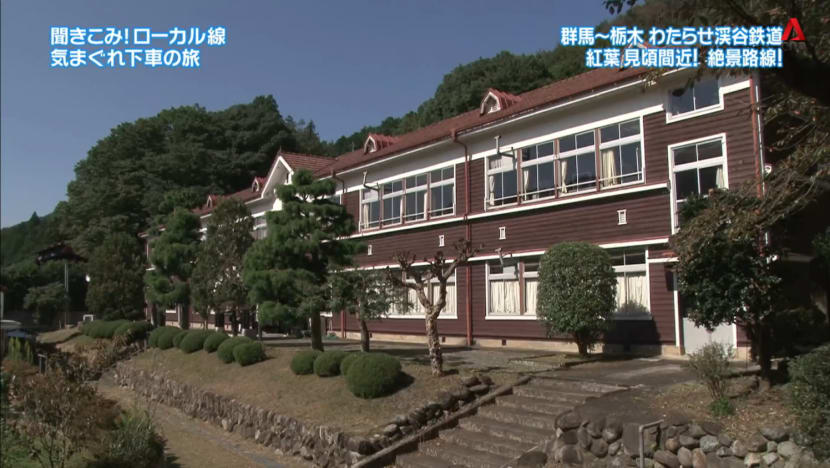Road Trip On Watarase Valley Railway - Part 2
Highlights this week are an old primary school building which is now a Tangible Cultural Property, a "train waterfall" with a drop of 70m, a restaurant built inside a train and a famous copper mine.

Our two-day trip on the Watarase Keikoku railway line continues. On the first day, we managed to advance to Motojuku Station and stay at Nashigikan, a luxurious hot spring inn. It is known for its pheasant dishes so for dinner, we are served shabu-shabu with kelp and pheasant broth, and pheasant meat mixed with green onions and yam. Other dishes include fresh rockfish sashimi and konnyaku with sweet miso paste.
The next morning, after a breakfast of pheasant meat porridge and locally grown mushrooms steamed with pork, the inn's van drops us off at Motojuku Station. We take the 9.30am train to Hanawa Station, which is about 10 minutes away. We visit a store here, where we learn about the Old Hanawa Primary School Museum, which is a registered Tangible Cultural Property. The school opened in 1873 and the current wooden school building was built in 1931. The school closed down in 2001.
After this, we take the train at 10.50am and head towards Godo Station. Along the way, we see the Jizo Waterfall, which has a drop of 70m. It can only be seen when one takes the train, which is why it is also known as the "train waterfall". We reach Godo at 11am and a resident here suggests Seiryu, a restaurant built inside a train named Kegon. It was used for the Nikko Kidogawa Line, running between Asakusa and Nikko. The restaurant has two train cars and a kitchen attached to it. We order the recommended maitake mushroom set meal and Yamato pork lunchbox.
After our meal, we catch the 12.30pm train. It runs through Watarase Valley and once it passes Sori Station, it leaves Gunma Prefecture and enters Tochigi Prefecture. We decide to get off at Tsudo Station. Before that, from the train, we see an old building which was previously an ore dressing plant before it closed down in 1973. It was where the ore mined at Ashio Copper Mine was sorted.
We reach Tsudo Station and visit the Ashio Copper Mine, which was in operation for about 360 years. We rent some bikes and later a trolley takes us to the mine site. The tunnel was dug more than 100 years ago and the total distance is more than 1,200km. Part of the mine is open to the public now and it shows how the work was done back in the day. We visit a souvenir shop selling copper products and ask the staff for recommended spots. She tells us about the Ashio History Museum - which displays things from the time when the copper mine was in operation - and a guest house called Kakemizu Club near Ashio Station. The latter is a national registered Tangible Cultural Property. We go to the history museum, which was built by local volunteers. Visitors can learn about the life and history of the people of Ashio in the past. They can also ride in a gasoline engine car which was used to transport people and goods.
After returning the bikes, we take the train from Tsudo and go to the neighbouring station of Ashio. We reach at 2.40pm and want to check out Kakemizu Club, which was mentioned by the lady at the souvenir shop. It is unfortunately not open so we start asking around for other recommendations. We speak to some students who suggest we try the croquettes from Masuya. However, it is near Tsudo Station, where we just came from. So we have to walk for 15 minutes back to Tsudo Station. The locals’ favourite butcher shop, Masuya was founded 100 years ago. Up to 500 pieces of croquettes, which are crunchy on the outside and fluffy on the inside, are made each day. We then catch the 4.10pm train at Tsudo Station and enjoy this last train ride, before finally reaching the goal of our two-day trip, Mato Station.
Tips:
1) During the train ride to Godo Station, look out for the Jizo Waterfall, which has a drop of 70m
2) Visit the Ashio History Museum to learn about life during the days of the Ashio Copper Mine












